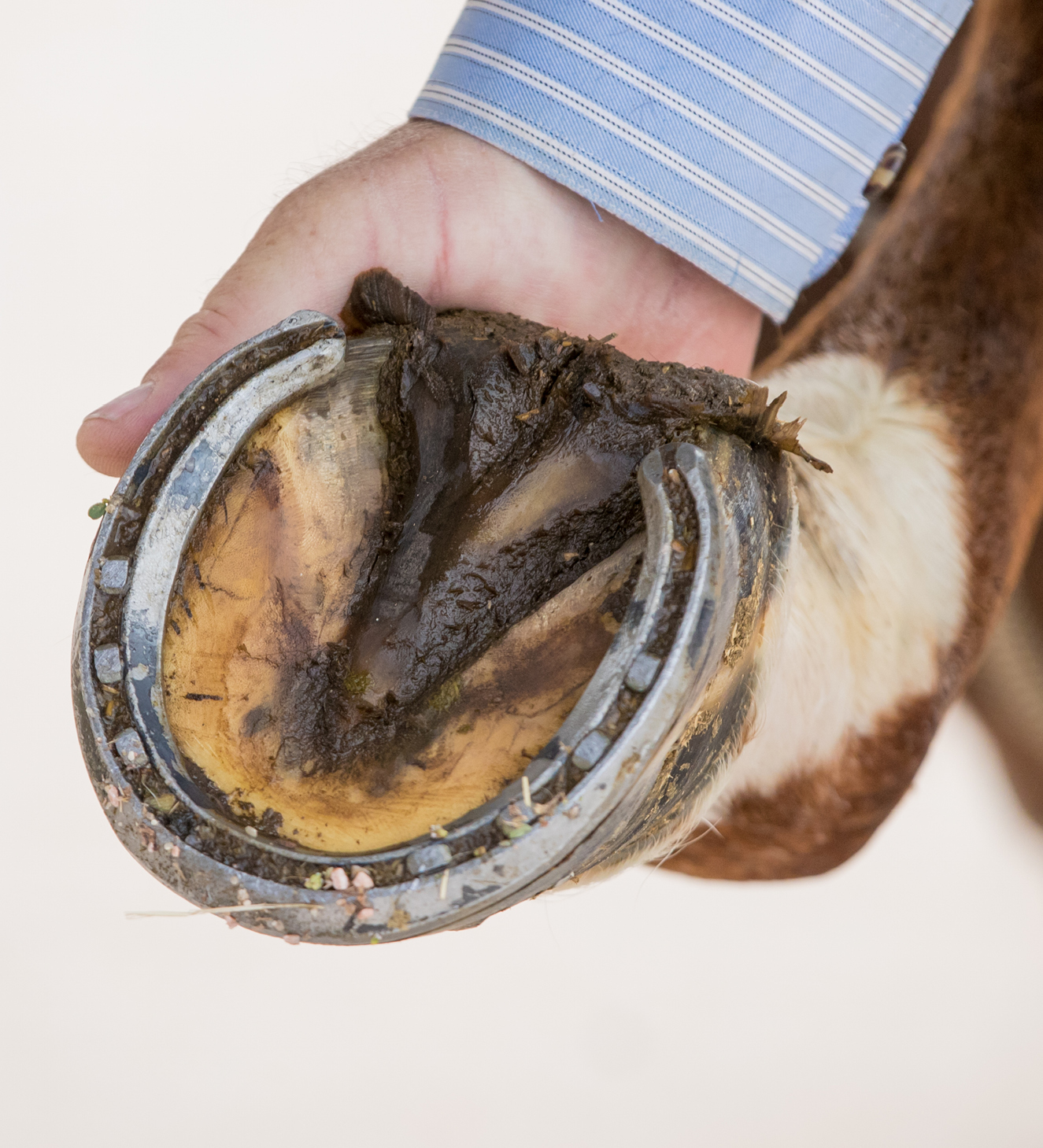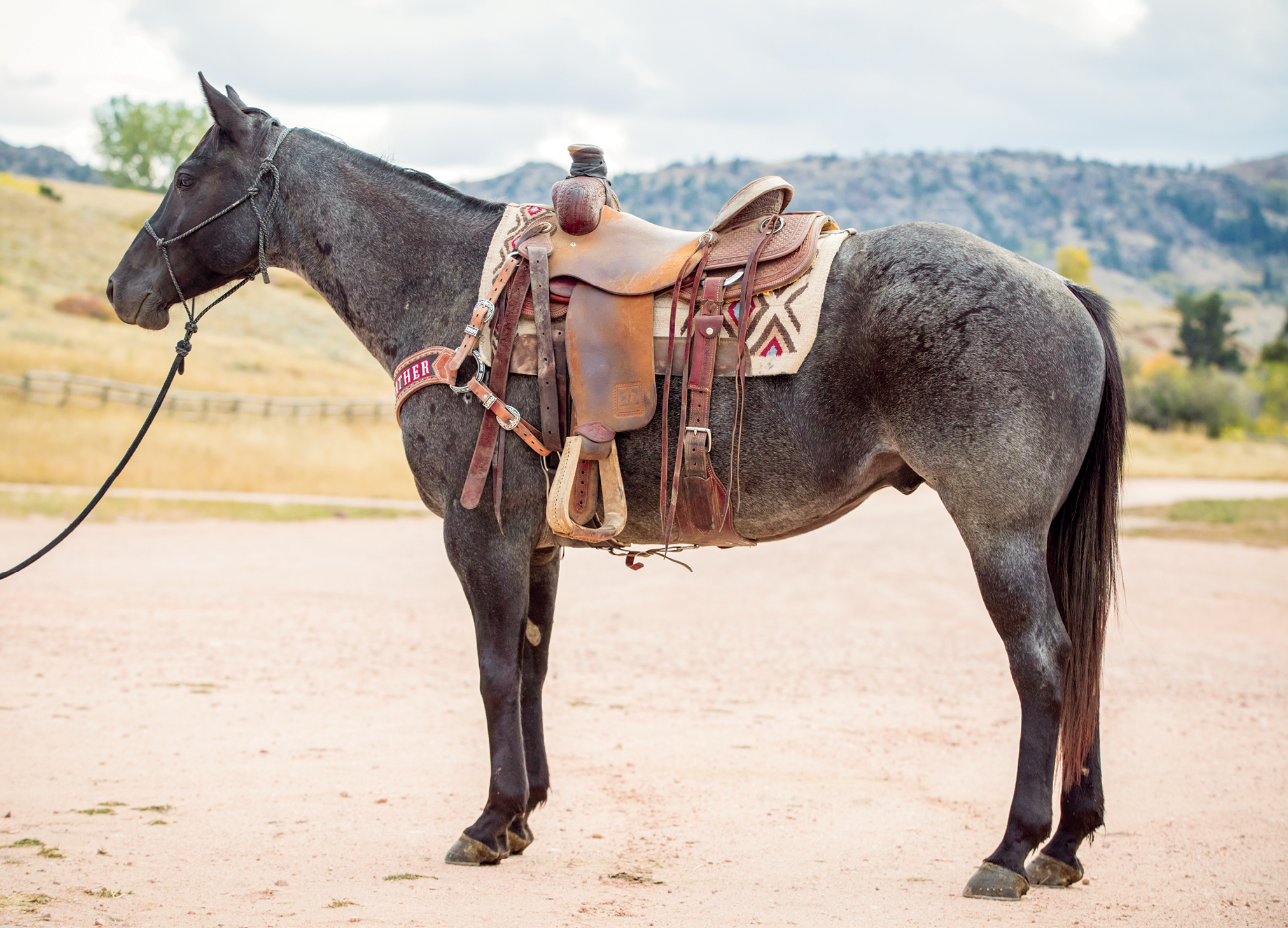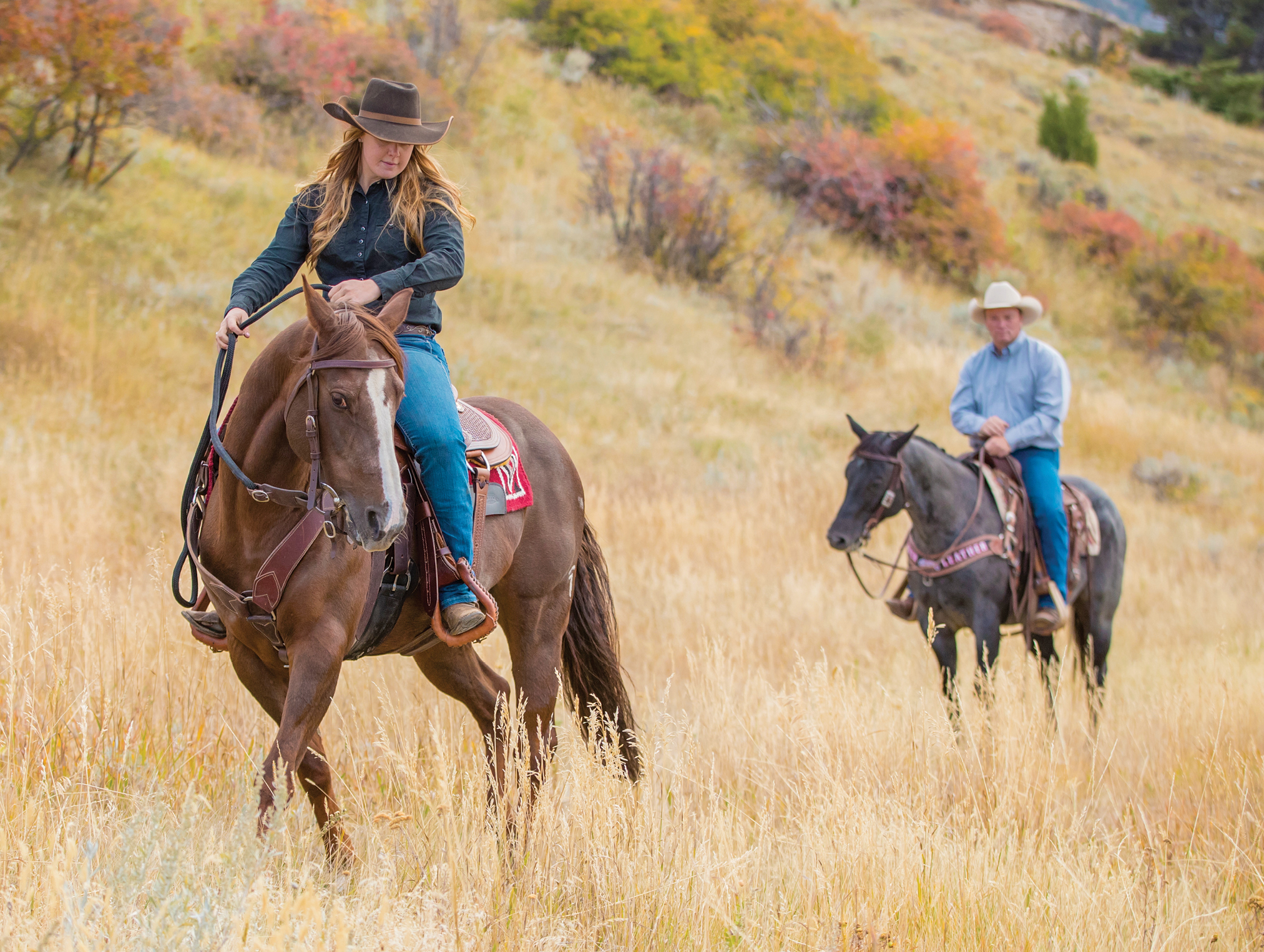To become the trustworthy, reliable, and dependable trail horse you count on in the backcountry, your horse has to be used. In the process, he’ll rack up some scrapes, bumps, and cosmetic issues. A few cosmetic issues are OK, but when you’re in the market to buy a trail horse, you need him to be more than reliable. You need him to be sound.
[READ: TRAIL INSIGHTS – RULES OF THE TRAIL]
Here I’ll explain common health-history, appearance, and movement issues that can indicate future soundness issues that could influence your horse’s usability on the trail. With each soundness consideration, I’ll give you the green light to go ahead, yellow to proceed with caution, and red light—which you know means don’t go further with the horse purchase. These clues will help you buy with confidence, ensuring that your horse isn’t just reliable, but trail-sound.
Issues in Health History
A horse’s history demonstrates how much he’s been used and how sound he’s likely to be in the future. Though many great horses have issues as the result of being used and becoming a great horse in the process, some are too much to manage and become non-negotiable for a trail rider in the market to buy.
Arthritis: Yellow light.
Proceed with caution and know how you’ll primarily ride before you buy. Though arthritis can be managed with joint supplements, NSAIDs, and cold and heat therapy, it’ll never go away. Heavier riders, such as large men; those interested in difficult backcountry riding; or a rider who’ll use the horse more than five times per week will struggle to manage worsening arthritis. Even with the best management, a flare-up can stop a ride prematurely if your horse is in too much pain to go on. If, however, you’re a physically light rider, such as a youth, smaller adult, or someone who only plans to ride lightly in easier terrain, you can look past mild arthritis.
For arthritis relief and preventative care, try Cosequin available on Amazon.
Products we feature have been selected by our editorial staff. If you make a purchase using the links included, we may earn a commission. For more information click here.
Bowed and/or Strained Tendons and Ligaments: Yellow light.
Proceed with caution unless you have the experience and patience to help your horse fully recover from this type of injury. Once a horse strains his tendon past what it’s accustomed to, it doesn’t just affect his ability to pack into the mountains; it also impacts his soundness in the arena. Proper recovery is key, and it’s not unusual for injuries like this to take six to eight months to fully heal. Though the same exact location is unlikely to reinjure after it’s correctly rehabbed, heavy, long backcountry travel is demanding on your horse’s structure, especially if he’s predisposed to this type of issue. Get a thorough veterinary exam before you purchase.
Navicular: Red light.
In the past, navicular was a career-ending diagnosis for a horse. While it’s more manageable now, it’s not curable and will eventually cause unsoundness in your horse. A youth rider or someone who’s interested in light riding may be able to manage pre-existing navicular with corrective shoeing and other therapies. If the case is severe or you’re a serious trail rider, steer clear all together.
Stifle Injury: Red light.
Injuries to the stifle joint are temperamental. If a prospect has a pre-existing issue that you know about, pass on him unless you’re positive that he’s been safely and slowly rehabilitated without subsequent flare-ups and issues. Know that he’ll need to be more carefully conditioned for the rest of his life to avoid problems. If you don’t know the sellers well and aren’t sure about his rehabilitation success, it’s best to pass. With this type of joint injury, it can worsen to the point that he’s no longer sound to ride at all—not even for light riding.
Stringhalt: Red light.
Any irregularity in a horse’s gait in the hind end is a deal-breaker for me. It could be due to a neurological issue or caused by an injury. Often this occurs in a trail horse if he gets his leg stuck in deep mud and pulls it. This stretches the tendon farther than its natural range, causing this issue. Like a stifle issue, it can be rehabbed to some extent, but it’s difficult to manage, even after it’s healed and he’s properly conditioned.
Stone Bruising and Sore Feet: Green light.
A horse with sore feet or stone bruising likely lives in an area with few rocks, so he has sore feet. Ride on soft ground and give him time to heal, and he’ll be ready to go. If you plan to ride in difficult terrain where he’s likely to re-bruise, his feet will need to become conditioned. Hard, rocky ground toughens feet, which results in fewer stone bruises on the trail. Let him get conditioned in his natural environment by not trying to protect him from hard ground, and then have him shod before your next rocky ride. To give him his best chance to avoid issues, always watch where you ride and choose the least harsh option.
Consider using trail boots by Easyboot for harsh trail-riding conditions.
[READ: SAFETY ON THE TRAIL]

Quarter Cracks: Yellow light.
Cracks are fixable, and like poor feet, he needs feed, conditioning, farrier care, and patience to get his feet back into shape. This comes at a cost though, so consider your budget and timeframe before purchasing a foot project.
Issues in Appearance
A non-show horse doesn’t need to be a showstopper if he has the experience and temperament for trail riding. But he does need to have attractive structure. Unappealing structure typically means abnormalities that cause inefficient movement. Over time, poor movement strains his body, and especially his joints, causing soundness issues.
Poor Body Condition: Green light.
Don’t shy away from a skinny, poorly conditioned horse just because he doesn’t look attractive. He won’t have a nice, sleek coat or appear muscled and ready to ride, but so long as he’s structurally correct, doesn’t have major soundness issues, and has the experience you need, he’ll still be a great trail horse. With feed, exercise, and time, even a poorly conditioned horse is a great fit. Caveat: Be sure his condition isn’t due to a chronic illness or disease.
Weak Muscular Structure: Red light.
Unlike poor body score, which indicates that he hasn’t been well cared for, weak muscular structure is an issue with the base. A horse without a solid base won’t be ready for difficult riding, even with the most expensive feeding program and rigorous riding schedule. This is because he either has a muscle disorder or simply is too slight in build to support the type of riding you plan to do.
Angular Irregularities: Yellow light.
While slight irregularities in pastern and hoof angle are manageable with shoeing, a horse with noticeable abnormalities, such as severe toe-out or toe-in, will inevitably experience issues. He’ll develop bony processes and arthritis, which is manageable for a light, inactive rider, but non-negotiable for a serious trail rider.

If you don’t plan to use him for high-level performance, slight structural angular issues aren’t deal-breakers. A horse that’s slightly toed-in or out, has too steep shoulders and hips, a long back, or sickle hocks will work for recreational and less strenuous trail riding. Seek out the help of a good farrier who’ll shoe and trim to your horse’s structure to manage the abnormalities, keeping him sound and staving off long-term issues, such as arthritis.
Poor Feet: Green light.
Shelly, soft feet intimidate riders because good feet are such a necessity for all riding, but especially if you ride outside of the arena. Don’t let poor feet scare you away from a prospect though. A good feeding program, supplements, conditioning, and regular trimming and farrier care will improve a horse’s feet in time. Even if he never has great feet, they’ll be strong enough and conditioned for trail terrain. You can also consider using hoof boots to help compensate for lack of hoof strength.
Issues in Movement
If a horse doesn’t move well and he doesn’t have any apparent structural issues, it’s either an undisclosed pre-existing issue or a sign that there’s one on the way. Don’t just look at a prospect and ask about his history; watch him go and look for indications of unsoundness.
Rough Gait: Green light.
If he stabs the ground with his toes or trips in his front end often, it’s usually not a sign of injury. He either needs a trim or is lazy, which are both solvable issues. Tripping in an exposed area can mean serious injury, so you’ll want to be sure to solve these problems at home before you head out on the trail. Have him trimmed or shod and encourage him to pick up his feet with drills and exercises. Work him over obstacles, such as trail poles in your arena. If he continues to walk lazily, know that he can be a safety hazard in the backcountry.
Head Bobbing: Red light.
Head bobbing is always a sign of lameness. If you see that he has a hitch in his gait and the seller hasn’t shared any lameness, move on. He or she isn’t being honest with you. If the lameness is new, work with the seller to enlist a veterinarian for a soundness check to discover the root cause before you invest in more vet care. If the owners balk at the suggestion, keep shopping. It’s possible there are other undisclosed issues.
Stiff Flexion: Yellow light.
Before you invest in a vet check, do some pre-screening of your own with a flexion test. Hold him flexed at each joint, flexing his fetlocks, hocks, and shoulders, and then trot him off after each flexion test. If he comes off of the static hold stiff, he’ll need a vet check to determine the root cause. The stiffness can be from an injury or the beginning of a long-term condition, such as arthritis. If he’s an older horse that’s been off for a while, it’s possible that he’s stiff from inactivity. Joint supplements and progressive conditioning should get him back in shape.

General Stiffness: Yellow light.
If as you ride, or as you watch the horse go, you notice stiffness in his movement that’s not related to training, beware. If he carries his head funny, is unable to stride out, or can’t bend and flex his neck, it could be due to an injury that hasn’t been well managed in his shoulders, back, or elsewhere. He’ll need additional vet screening or body work before he’s ready for you.
[READ: TRAIL-RIDING CONFIDENCE]
Hind-End Irregularity: Red light.
Funny, irregular, or weak movement in the back end often indicates a back issue. If he’s out of shape, it might be that he lacks the strength to properly carry himself. While the appearance of his topline will improve with conditioning, back issues themselves aren’t solvable with exercise. Saddle fit and pad selection will also be more difficult for a horse like this. It’s best to pass and keep looking.
Winging Out or Paddling: Red light.
A horse that flares his legs out when he moves has a joint deviation at his knees or fetlocks. This movement causes strain to the joint every time he moves and is exacerbated with difficult riding. If you’re the type of trail rider who enjoys difficult trails, multi-day trips, or who rides frequently, know that even if a horse doesn’t have visible issues now, he will later, and most likely it’ll be arthritis. To check for the source of the winging or paddling, start with his knee. Fully bend his knee and look at his leg. If it flares out or in from his knee, rather than aligning straight, the knee is the abnormality. To check the fetlock, bend his fetlock and watch whether it arches straight or off to either side. If it doesn’t align straight, his fetlock is the issue.






